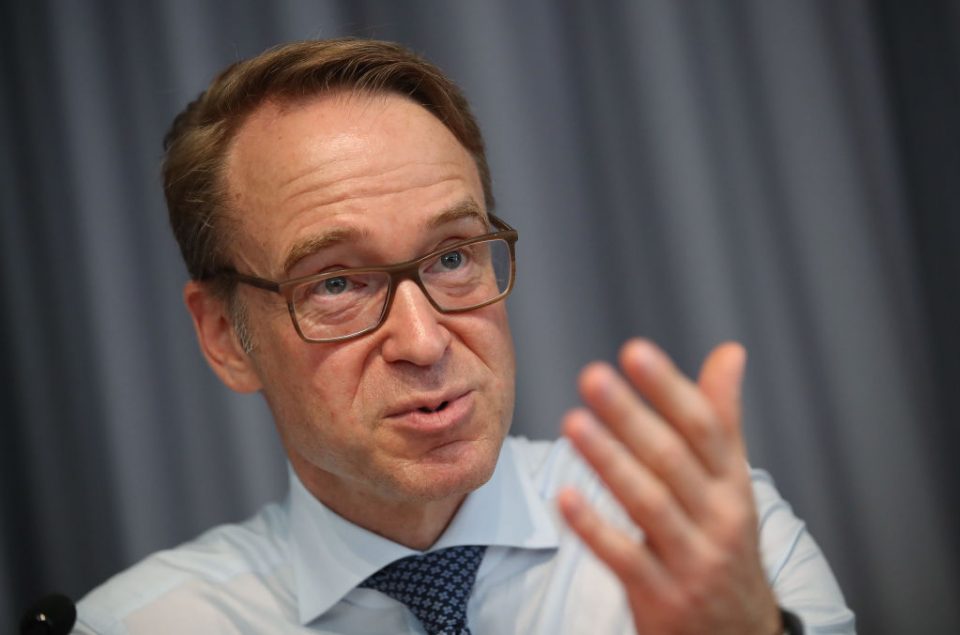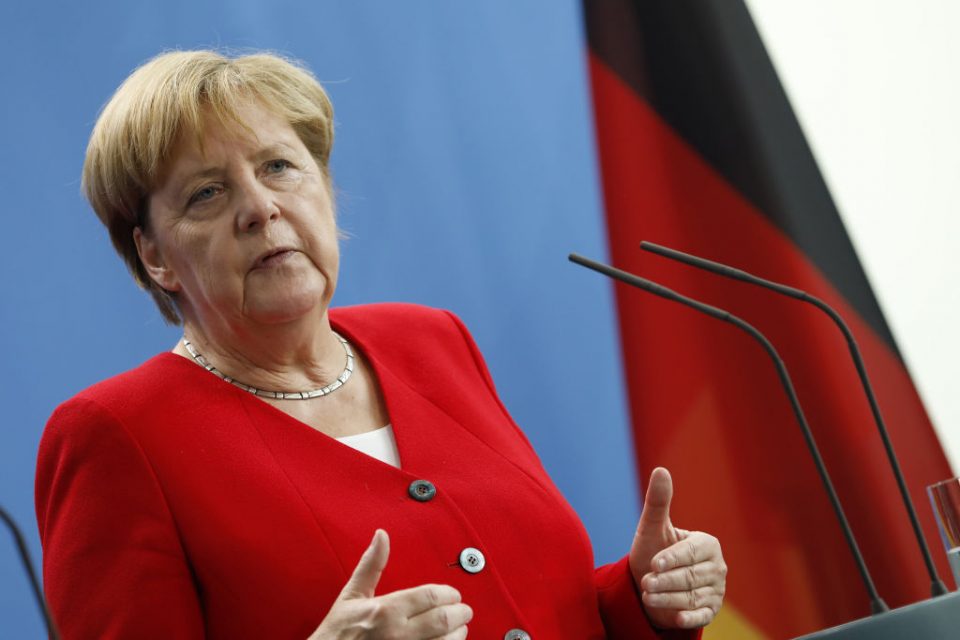The economy is slowing – can central bankers fight the next downturn?

The global economy has not had a good year, to put it mildly. Trade-war uncertainty and Chinese weakness have taken a heavy toll, with growth in 2019 set to be the worst since the financial crisis, according to the International Monetary Fund.
Such an environment has produced many doomsters and gloomsters, to use Boris Johnson’s phrase. But there are few in finance as gloomy as Donald Amstad, head of Asian investment specialists at Aberdeen Standard Investments.
Read more: Bank of England: Trade wars and Brexit deal will limit growth
In a video from August that (by the financial world’s standards) went viral with 700,000 views, Amstad argued that the developed world is on the brink of an economic and political crisis that its policymakers are poorly-placed to tackle.
One of Amstad’s chief concerns is that central banks in developed economies “are very close to being out of bullets,” he tells me. Having saturated markets with printed money and slashed interest rates, in some cases to below zero (meaning investors pay to lend), there seems to be little left in the arsenal with which to slay the next downturn.
A major question is whether interest rates can go much lower than zero without serious distortions. Minus one per cent may be possible, but “I’m not sure you can go to minus 10,” Amstad says.
Yet some see things another way, arguing that rate-setters have innovated before and will do again. Danae Kyriakopoulou, chief economist at central bank forum Omfif, says: “Throughout the crisis central bank toolboxes have been strengthened, they have more powers now.”
Many policymakers and pundits say negative interest rates and other ultra-unorthodox policies are already a problem, which are now worsening the slowdown rather than soothing it.

Read more: IMF says 2019 global growth to be lowest since financial crisis
Amstad sees merit in this argument. “I give the example of my mother, God bless her, who’s not earning any money on her savings in the bank and therefore feels that she has to economise,” he says. Across an economy, such attitudes damped growth.
The chief executives of Deutsche Bank and UBS have said European lenders are also suffering under the policy. With rates so low, there is little money to be made from the interest margin, they say.
Part of the problem for the economy, Amstad argues, is that central banks’ money-printing schemes have not gone to plan. The idea was that firms would invest the cheap money they were handed, kickstarting the economy. Instead, “they’ve used this as an opportunity either to pay special dividends or to buy back stock,” Amstad says. “Then we’ve had a sustained period of austerity.”
What can be done to wean the world off central banks’ cheap money and boost growth? Absent a US-China trade deal, one increasingly talked about solution is government spending.
But this route runs into a major obstacle, Amstad says: a bubble in the bond market. Driven by central bank policy and a slowdown, investors have piled into safe-haven assets. More than $15 trillion (£11 trillion) of bonds, roughly a quarter of global government and corporate debt, are trading with negative yields, indicating a surge in demand.

Read more: Donald Trump defends China trade war but says a deal ‘close’
Governments turning on the taps might cause a rush out of bonds towards new assets. Using fiscal policy to boost growth will be like “trying to let the air out of the balloon very gently, without the whole thing going pop,” Amstad says.
The consequences of getting it wrong could be dire. Bonds are the supposedly risk-free asset class, so if they rapidly lose value “there is no stabiliser,” says Amstad. “It could wipe trillions of dollars off the value of portfolios.”
A silver lining for the global economy is that developing economies, particularly in Asia, seem better-placed to deal with the next crisis. Amstad, who has worked in Singapore for 12 years, says: “There will be firepower here to be put to work in the event of a downdraft.”
“When we look at current account balances broadly in the region, when we look at fiscal deficits broadly in the region,” he says, “they are being broadly sensibly managed”.
Gerard Lyons, chief economic adviser at investment service Netwealth, says that although things are undoubtedly gloomy right now, the long-term picture for developed economies is much brighter.
Read more: ‘Super’ Mario Draghi’s odyssey comes to an end
He says the “fourth industrial revolution,” the development in things like cloud computing and 3D printing, is likely to drive productivity and growth. Despite the slowdown, “one is still seeing much investment in R&D and in innovation by some leading companies,” he says.
For now, the push towards fiscal policy as a solution seems hard for policymakers to resist. The Conservatives promised spending splurge sums this up, Amstad says. “To me that sounds rather Keynesian and it sounds rather Corbynesque, dare I say.” We will have to wait and see whether the turn to Keynes will be effective.
(Main image: Getty)